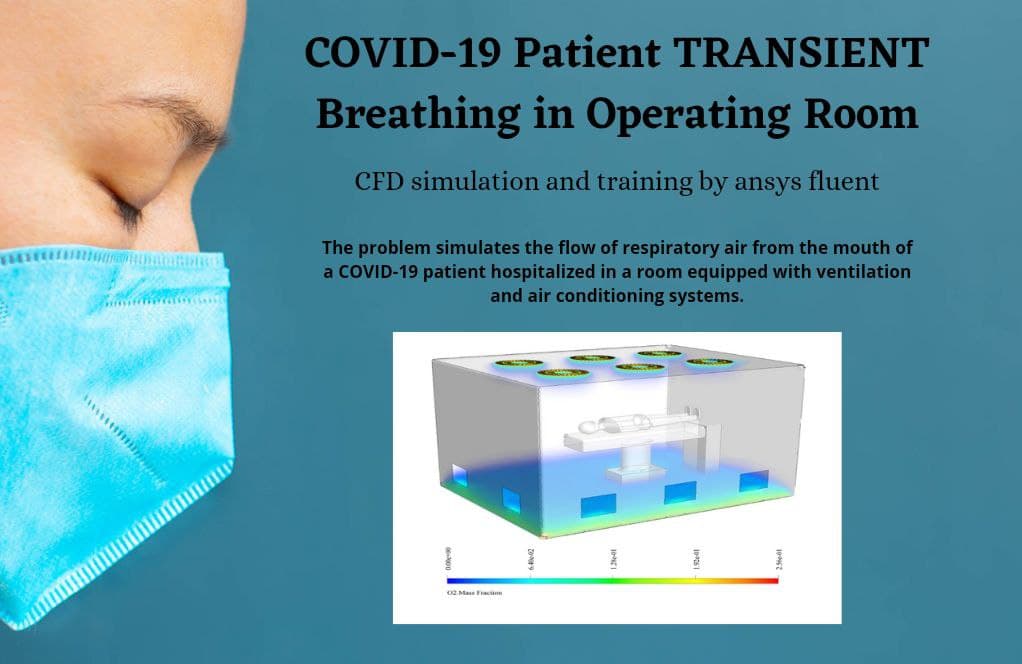Arterial Stent CFD Simulation, ANSYS Fluent
$120.00 Student Discount
- The problem numerically simulates Arterial Stent using ANSYS Fluent software.
- We design the 3-D model by the Spaceclaim software.
- We Mesh the model by ANSYS Meshing software, and the element number equals 220,000 and 250,000 for the Stenosis and stented artery respectively .
- We use a UDF to define pulsatile blood flow.
- The Eulerian multiphase model was enabled to distinguish between the blood and arterial wall interfaces.
To Order Your Project or benefit from a CFD consultation, contact our experts via email ([email protected]), online support tab, or WhatsApp at +44 7443 197273.
There are some Free Products to check our service quality.
If you want the training video in another language instead of English, ask it via [email protected] after you buy the product.
Description
Arterial Stent CFD Simulation, Improving Blood Flow and Reducing Shear Stress, ANSYS Fluent
Description
In this project, we utilized ANSYS software to simulate blood flow through arteries with and without the presence of a stent. The goal was to investigate the impact of stents on hemodynamics, particularly shear stress and pressure distribution, which play crucial roles in cardiovascular health.
Methodology
1.Geometry Creation: Two geometries were modeled using SpaceClaim software. The first case represented a Stenosis artery without a stent, while the second case incorporated an artery with a stent implanted. The following equation has been utilized to create the clogged area(Case 1).
2.Mesh Generation: ANSYS Meshing was employed to generate high-quality computational meshes for both cases. The Stenosis artery mesh consisted of over 220,000 cells, and the stented artery mesh had approximately 250,000 cells.
3.Simulation Setup: ANSYS Fluent was used for the computational fluid dynamics (CFD) simulations. A pressure-based solver was chosen, and a transient model was implemented to capture the time-dependent nature of blood flow. The Eulerian multiphase model was enabled to distinguish between the blood and arterial wall interfaces.
4.Boundary Conditions: At the inlet, a User-Defined Function (UDF) was implemented to simulate pulsatile blood flow, with velocities ranging from 0 to 0.33 m/s, mimicking the conditions in an artery. The outlet velocity profiles were monitored throughout the simulations.
5.Solution Methods: The coupled algorithm was used to couple pressure and velocity fields, while the PRESTO! model was employed for pressure calculations. Simulations were initialized using standard methods, with a time step of 0.001 seconds and a total of 200-time steps.
Results and Discussion
- Shear Stress Distribution: The simulations revealed a significant difference in shear stress distribution between the two cases. In the Stenosis artery without a stent, high shear stress regions were observed, which can potentially lead to endothelial cell damage and increased risk of thrombosis. However, with the introduction of the stent in the second case, the shear stress levels were substantially reduced, indicating improved hemodynamics and reduced risk of complications.
- Pressure Distribution: The pressure distribution also varied between the cases. In the Stenosis artery without a stent, higher pressure was observed compared to the stented artery case. This finding aligns with the expected behavior, as stents help alleviate the narrowing of the artery and facilitate improved blood flow, thereby reducing the pressure burden.
- Outlet Velocity Profiles: The outlet velocity profiles provided valuable insights into the flow dynamics. In the stented artery case, the velocity profile exhibited a more uniform and consistent pattern over time, indicating improved flow characteristics compared to the Stenosis artery without a stent.
Conclusion
Through this simulation project, we demonstrated the potential benefits of arterial stents in improving blood flow and reducing shear stress levels. The stented artery exhibited lower shear stress regions, more favorable pressure distribution, and improved outlet velocity profiles compared to the Stenosis artery without a stent. These findings highlight the importance of stent implantation in managing cardiovascular conditions and underscore the value of computational simulations in evaluating and optimizing medical interventions.











Reviews
There are no reviews yet.